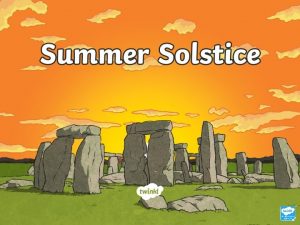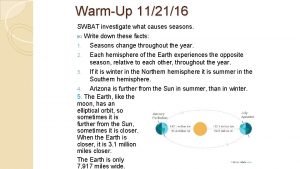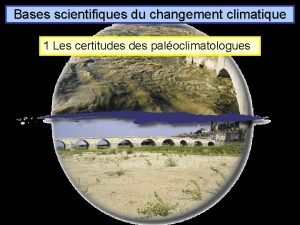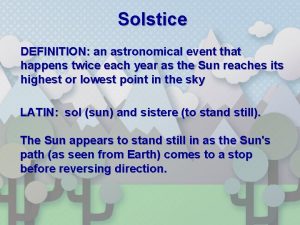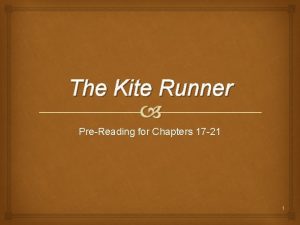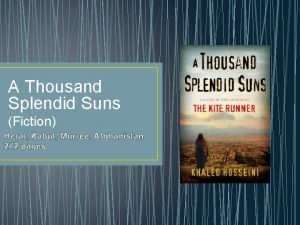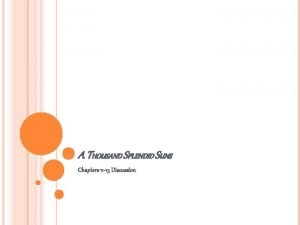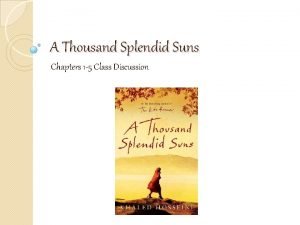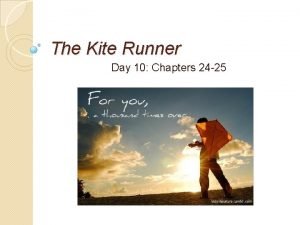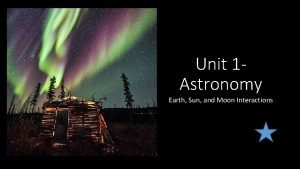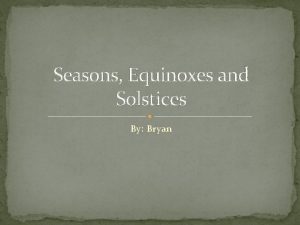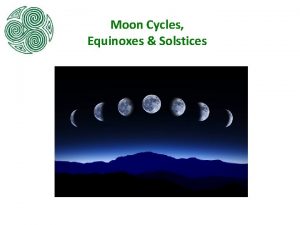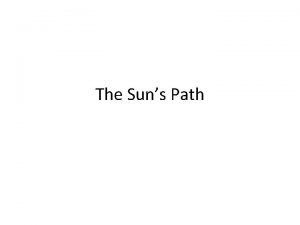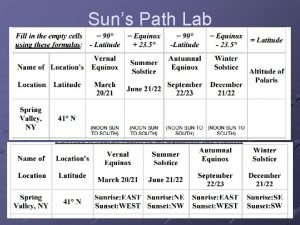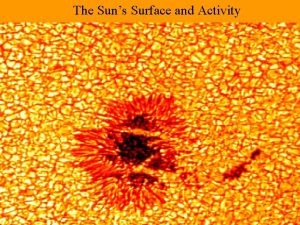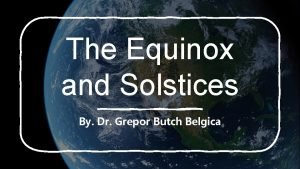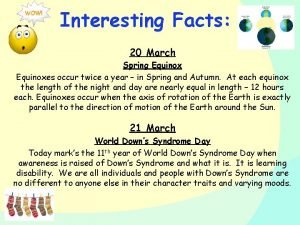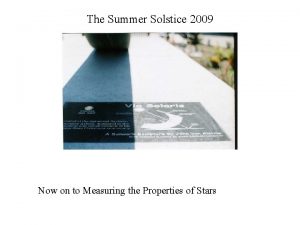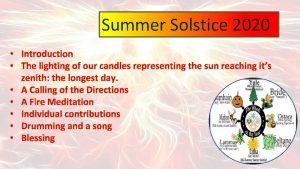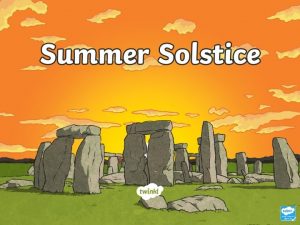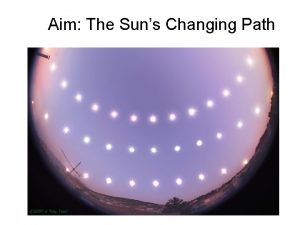Suns path review Solstices and Equinoxes Summer Solstice















- Slides: 15

Sun’s path review

Solstices and Equinoxes Summer Solstice = June 21 – Sun rises North of East & Sets North of West – 15 Hours of Daylight – Sun’s rays are direct at the Tropic of Cancer

Winter Solstice = December 21 – Sun rises South of East & Sets South of West – 9 Hours of Daylight – Sun’s rays are direct at the Tropic of Capricorn

Sun’s Path: Equinoxes Fall Equinox = September 22 – Sun rises Due East & Sets Due West – 12 Hours of Daylight – Sun’s rays are direct at the Equator

Spring Equinox = March 21 – Sun rises Due East & Sets Due West – 12 Hours of Daylight – Sun’s rays are direct at the Equator *Notice they are the SAME except for the dates*



As angle increaseses, Intensity_____

Where the sun rises and sets DATE (APPROXIMA TE) LATITUDE DIRECTION ALTITUDE OF SUN'S OF SUNRISE OF NOON DIRECT AND SUNSET SUN RAYS LENGTH OF DAYLIGHT Sept. 23 (Autumnal Equinox) Equator (0°) Rises due East Sets due West 48° 12 hours December 21 (Winter Solstice) Tropic of Capricorn (23. 5°S) Rises in South East Sets in South West 24. 5° (lowest) 8 hours (shortest day) March 21 (Vernal Equinox) Equator (0°) Rises due East Sets due West 48° 12 hours June 21 (Summer Solstice) Tropic of Cancer (23. 5°N) Rises in North East Sets in North West 71. 5° (highest) 16 hours ( longest day)

Seasons • Due to the tilt of the earth • More direct rays in summer. Direct= hotter • We are closer to the sun in the winter

Seasons


What Season?

Shadows • Point north • Get shorter when the sun is higher • Longer when sun is lower

Relationships • • As intensity of insolation inc, temp___ As angle of insolation inc, temp_____ As angle inc, shadow length______ As latitude increases, intensity/angle of insolation____ • As the sun goes from A to B to C, what happens to Intensity of insolation?
 Pie chart showing the summer and winter solstice
Pie chart showing the summer and winter solstice Summer solstice
Summer solstice Why do globes lean sideways brainpop
Why do globes lean sideways brainpop Précession des équinoxes animation
Précession des équinoxes animation Solstice definition simple
Solstice definition simple Unity iot
Unity iot Kite runner chapter 17
Kite runner chapter 17 Examples of imagery in a thousand splendid suns
Examples of imagery in a thousand splendid suns Thousand splendid suns theme
Thousand splendid suns theme A thousand splendid suns chapter 11 summary
A thousand splendid suns chapter 11 summary A thousand splendid suns summary chapter 1-5
A thousand splendid suns summary chapter 1-5 Chapter 24-25 kite runner
Chapter 24-25 kite runner Afghanistan
Afghanistan Figurative language in kite runner
Figurative language in kite runner Layers of the sun
Layers of the sun Suns position
Suns position
